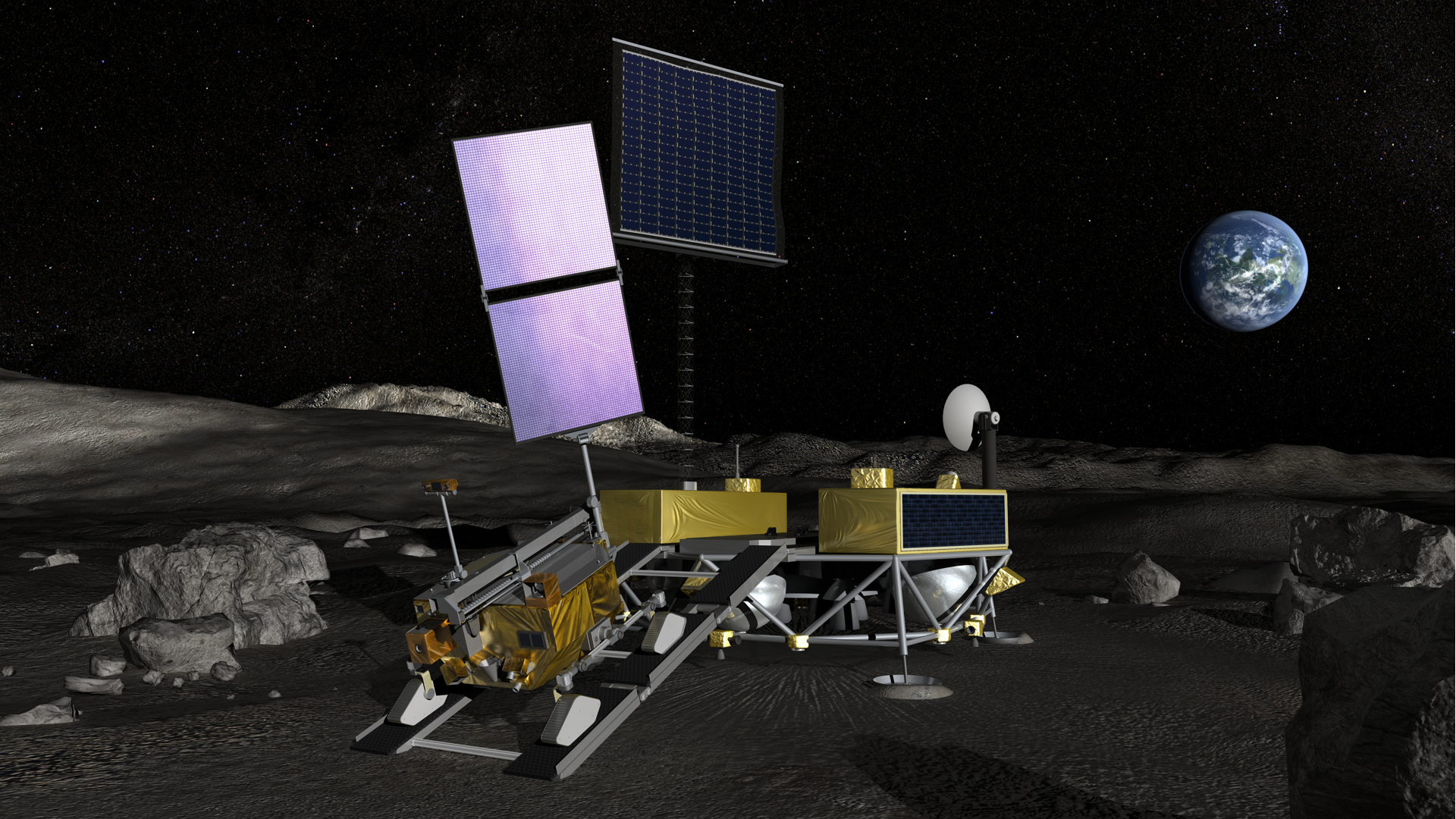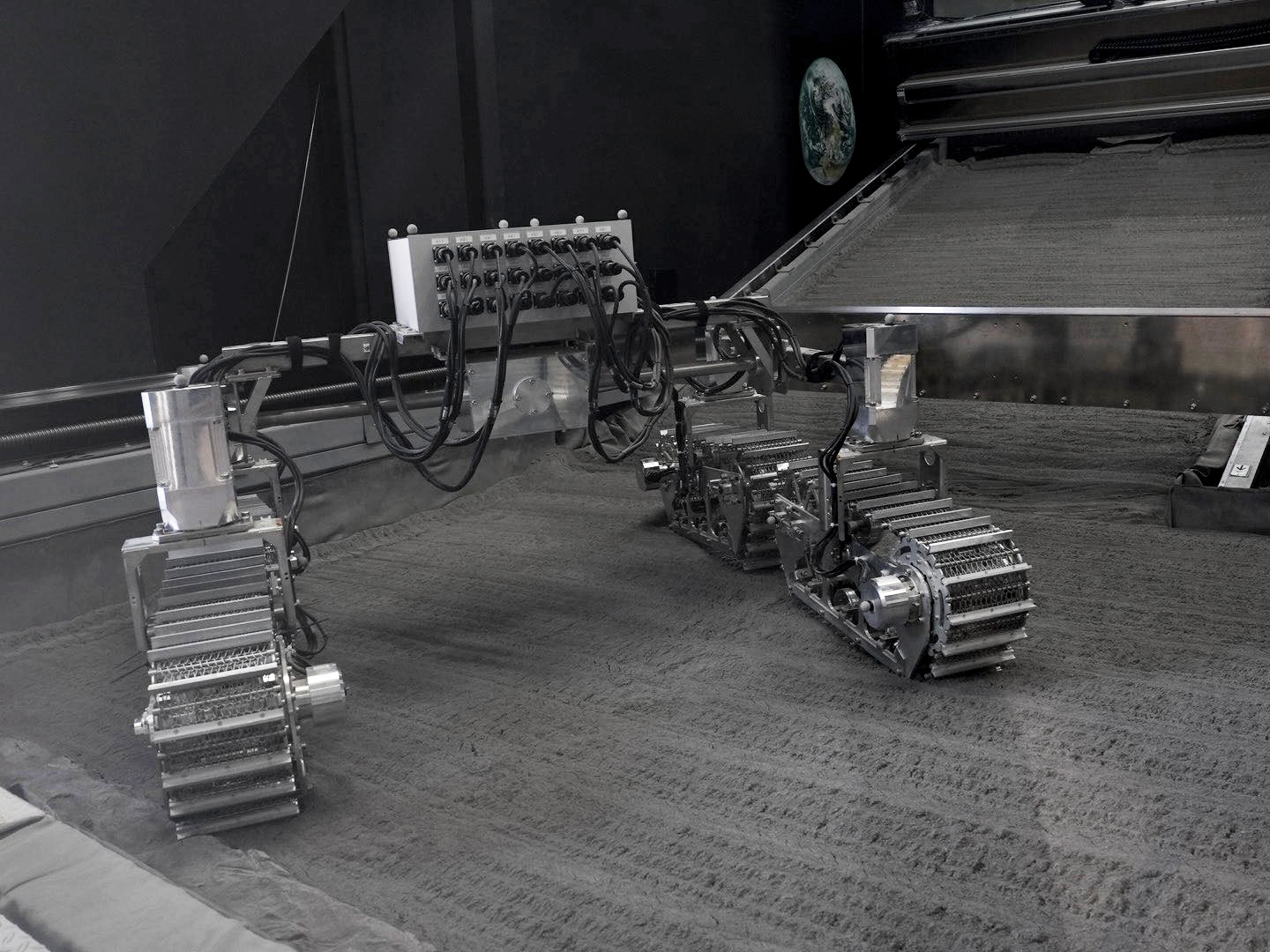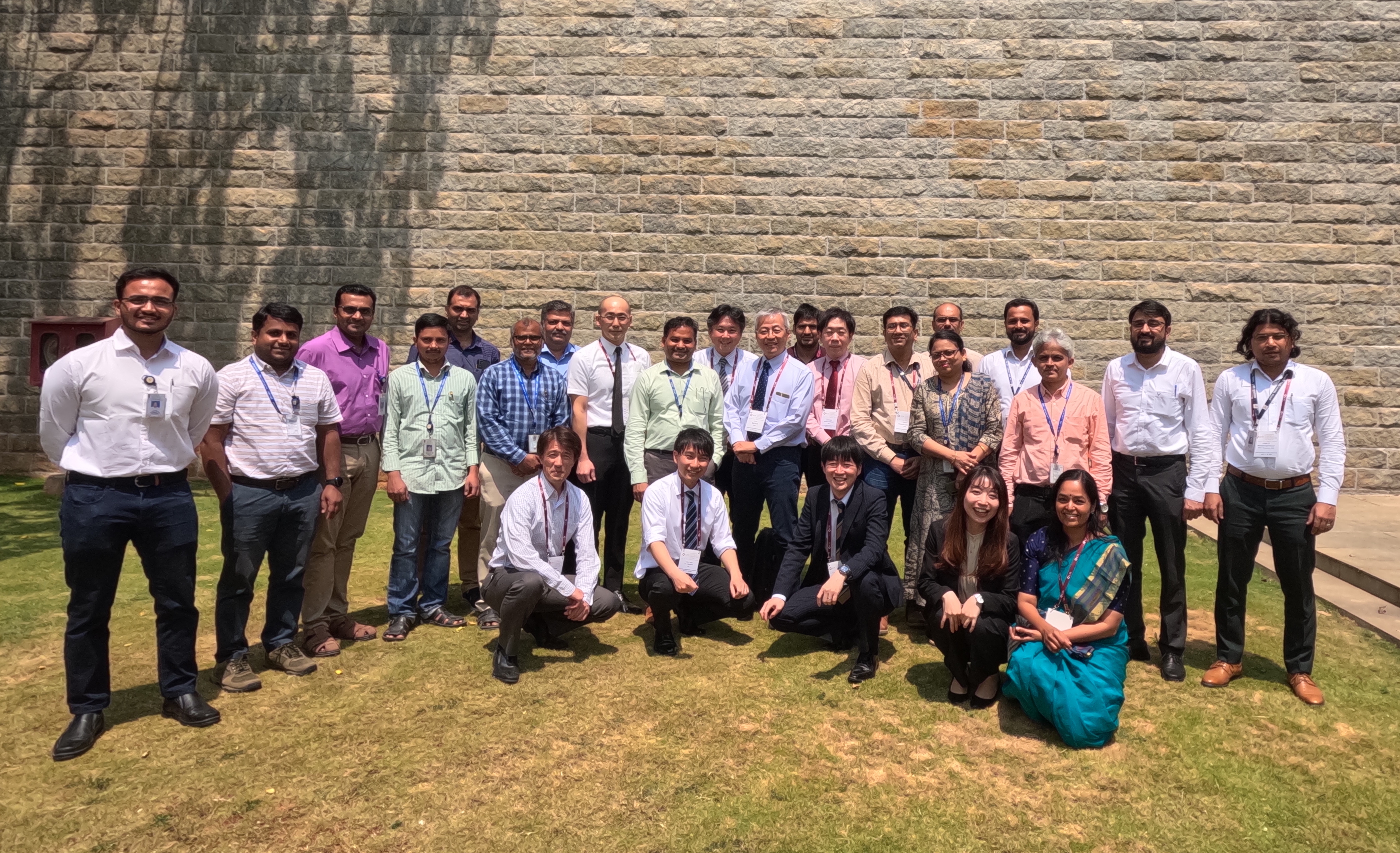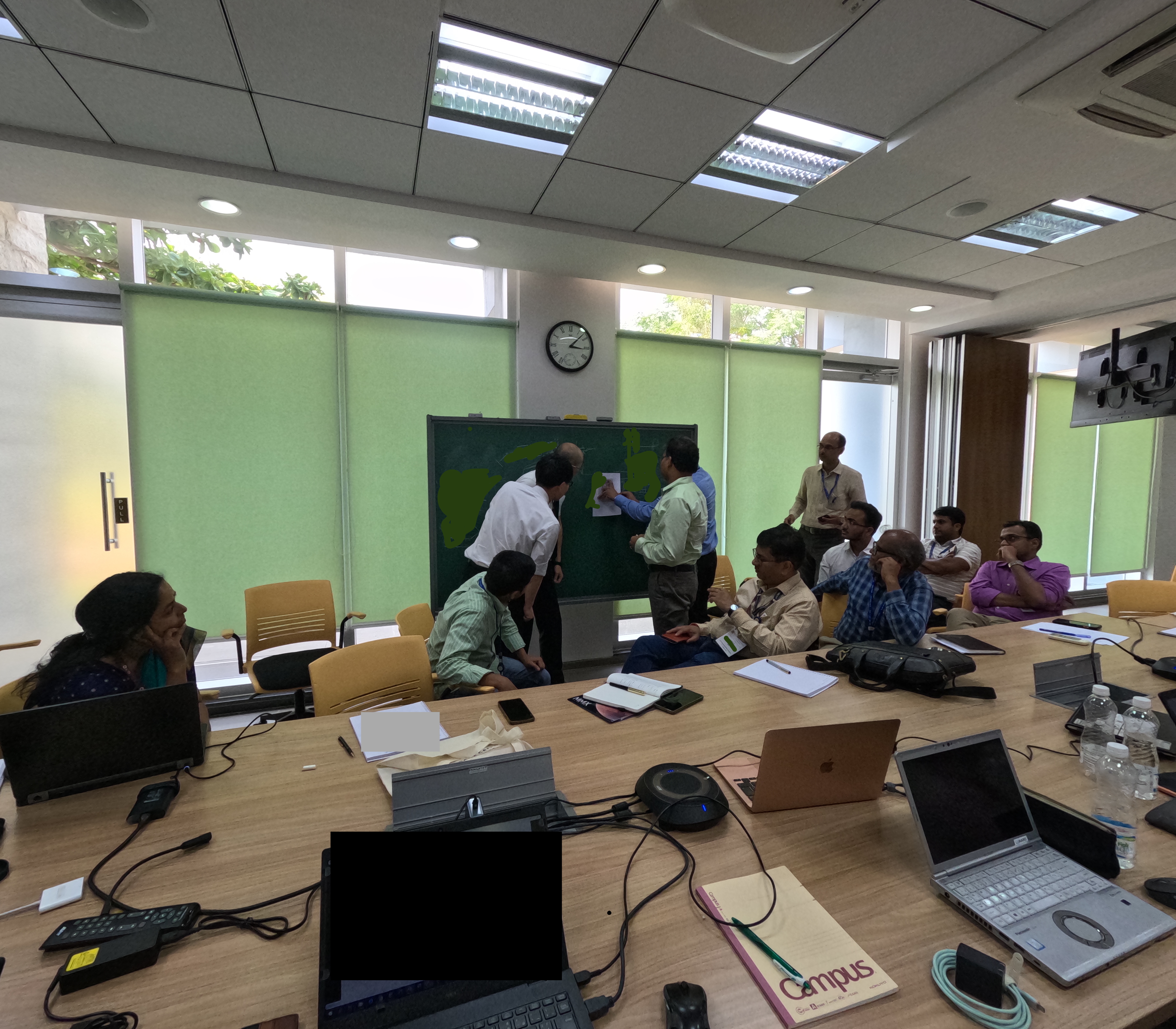
JAXA Space Exploration Center (JSEC)

Image CG of the Lunar Polar Exploration (LUPEX) project
Working with India to Investigate if There is Water on the Moon
Lunar Polar Exploration (LUPEX) Project Underway
Lunar exploration has been gaining momentum internationally in recent years, and JAXA has formed a partnership with the Indian Space Research Organisation (ISRO) to implement the Lunar Polar Exploration (LUPEX) project.
Why are humans looking to go to the Moon now? What kind of research are they trying to conduct there? We spoke with project members INOUE Hiroka and FUJIOKA Natsu on these and other questions.
Pursuing international cooperation to reach the Moon's polar regions
The LUPEX project is an initiative aimed at exploring the Moon for water and other resources and gaining expertise in exploring the surface of the Moon. The LUPEX project is an international cooperative project, with JAXA in charge of the lunar rover and ISRO responsible for the lander that will carry the rover; observation instruments from NASA and the European Space Agency (ESA) will also be mounted on the rover.
International interest in the Moon is on the rise, as exemplified by the Artemis mission (a US-led plan to send astronauts back to the Moon to stay on the lunar surface and conduct sustained exploration activities). Inoue, whose duties encompass international cooperation and the selection of candidate landing sites for the LUPEX project, explained the reason for this.
“Analyses of various observational data over recent years suggest that water may be present in the lunar polar regions, the lunar polar regions being those areas around the Moon's north and south poles. If water can be found in these regions, it could be used as an energy source for future human activities on the Moon. For this reason, countries are aggressively pursuing lunar exploration.”
Fujioka, who is involved in developing the rover, had this to say on the significance of the LUPEX project in the context of this international trend.
“The LUPEX project will investigate the quantity and quality of water on the Moon. We hope to use this data as a basis for considering sustainable human activities on the Moon in the future. In addition, acquiring the technologies needed for rovers and landers to operate in the harsh lunar environment is very important for pursuing space exploration.”
Video depiction of observing the Moon's surface
Developing rovers equipped with advanced measuring and driving technology
The rover being developed by JAXA will drive on its own to search for areas where water is likely to be present and sample the soil by digging into the ground with a drill. The plan is to acquire data by analyzing the collected samples in detail with observation equipment mounted on the rover.
“The rover will be equipped with instruments for measuring the water content of regolith (lunar sand), drilling and sampling, as well as with other world-first and world-leading technologies for the driving system and batteries. It is a challenging project to transport a rover weighing several hundred kilograms loaded with these instruments to the Moon, move it around, and measure the collected samples in situ.”
Fujioka said the rover is in the basic design phase, noting that she often faces difficulties when building prototypes and conducting running tests.

Driving test
“In the running tests, we spread sand that resembles lunar sand on the test site and run the prototype. We repeatedly make adjustments to determine how soft the sand should be to resemble the actual lunar surface, and how uneven the sand should be to allow the vehicle to move forward. We also carefully evaluate the sinkage of the crawlers (the part that corresponds to the rover's tires) and make repeated fine adjustments. There are no easy answers.”
Partnership with ISRO
Meanwhile, Inoue is coordinating with ISRO.

Group photo during visit to India (Inoue is second from the right in the front row)
“ISRO has advanced technological capabilities that it has applied to operating lunar orbiters and developing lunar landers and rovers, and the LUPEX project will have to build a larger lunar rover than ISRO has developed to date. We hope to make an international impact by combining these capabilities with JAXA's rovers and measurement/analysis technologies.”
Inoue, who had been meeting online due to the COVID-19 pandemic, recently traveled to India.

Meeting in India
“The meeting was significant in that it enabled us to talk directly about the progress and direction of development and about how to interface JAXA's rover and ISRO's lander. In future, we plan to have more online meetings with working groups in each field, while also arranging regular opportunities for face-to-face meetings.”
What is the future illuminated by the LUPEX project?
The LUPEX project is currently scheduled for launch in 2025. Inoue talked about the future of the LUPEX project.
“With respect to my own area of responsibility, we need to decide on a specific landing site. We are currently planning to land in the Moon's south polar region. This area is thought to have a high potential for water, but there are very few flat, easy landing sites with good illumination and communication conditions. Given the possibility that our selection could coincide with that of another country, we are looking to announce our landing site as soon as we find an optimal location.”
If we can get detailed data regarding water on the Moon, we may be able not only to live on the Moon but even to use this water to generate propellant on the Moon and travel to more distant celestial bodies. Developments are underway to expand the sphere of human activity.
Profile

|
|
|---|

|
|
|---|
All the images are copyrighted ©JAXA unless otherwise noticed.
- Home>
- Global Activity>
- Public Relations>
- JAXA’s>
- JAXA's No.92>
- Lunar Polar Exploration (LUPEX) Project Underway, Working with India to Investigate if There is Water on the Moon